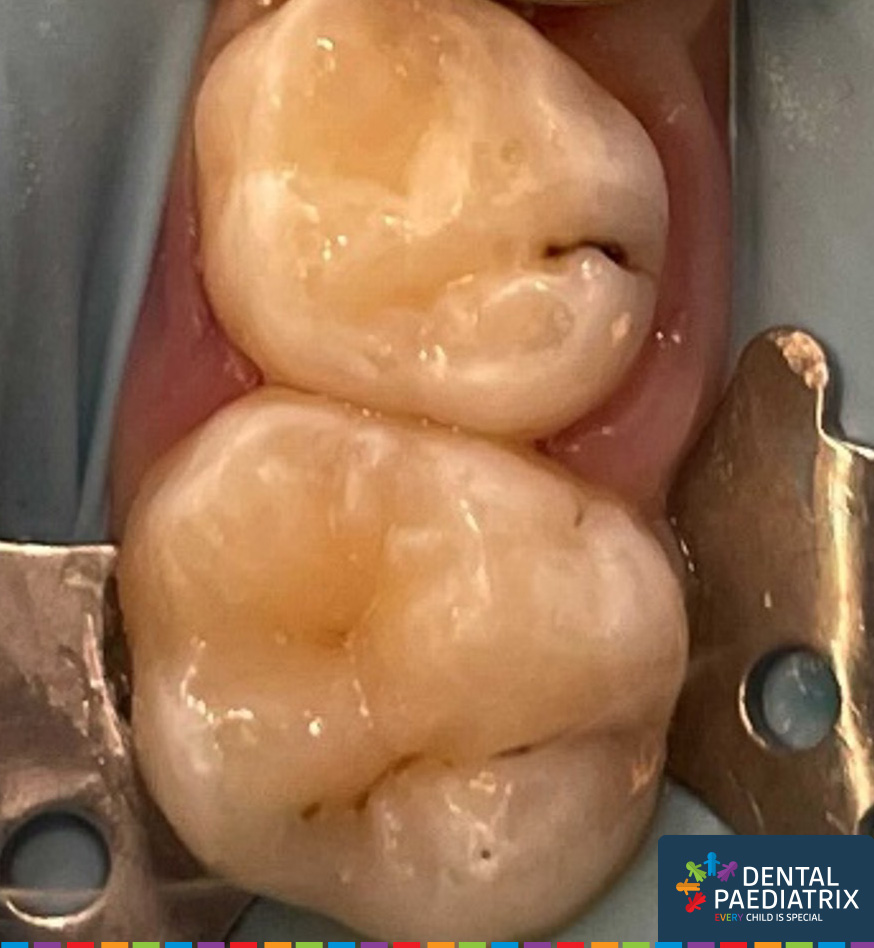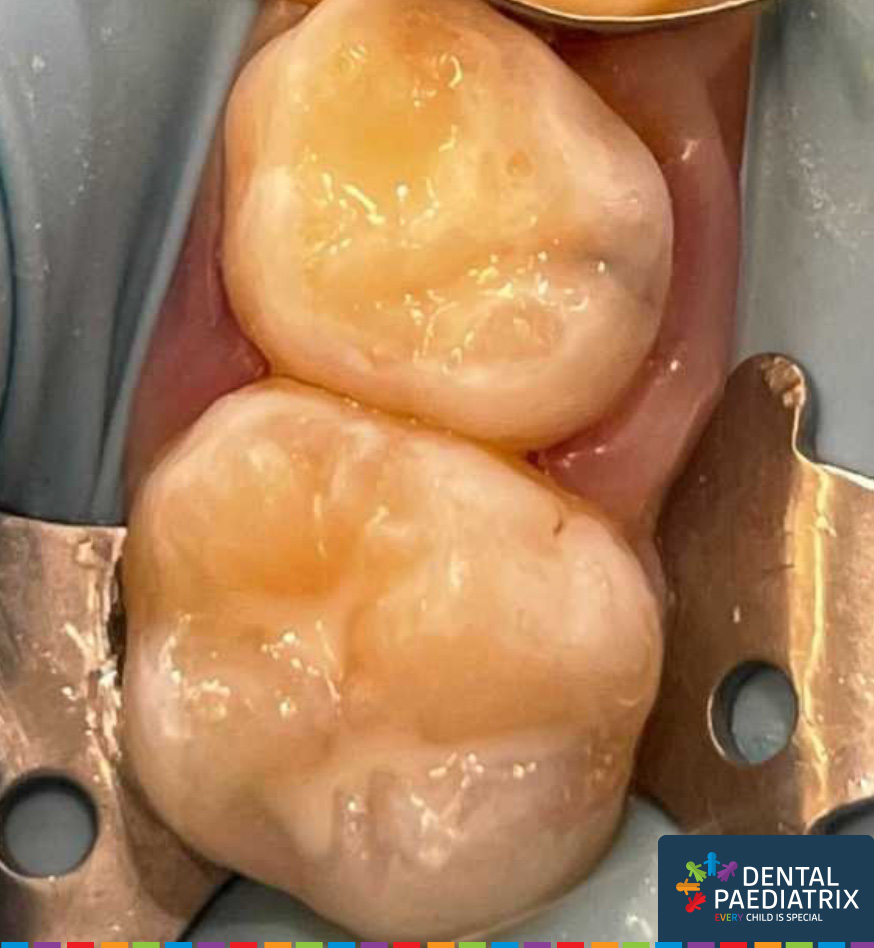What are fissure sealants?
Fissure sealants are a protective layer applied over the grooves of the teeth to prevent food from being lodged and to make cleaning easier. It is commonly done on the molars, but sometimes the biting surface of premolars and the back of front teeth can have deep grooves which may benefit from fissure sealants.
Why does my child need fissure sealants?
Molar teeth have pits and grooves (also known as fissures) which are prone to trapping food and germs. Some of these fissures are so deep and fine that even a toothbrush bristles are unable to clean them properly which increases the risk of decay.
Fissure sealants may also be recommended for children with a high risk of decay. Factors that indicate an increased risk of decay include poor oral hygiene, high sugar/starch diet, active decay, inadequate fluoride exposure, low saliva flow, family history of decay, orthodontic appliances, enamel defect conditions such as hypomineralisation, special health care needs, and certain medications.
How is it done?
The procedure is quite simple and non-invasive. The tooth is polished to remove food and plaque to provide a clean working surface. An acidic gel is applied for a short time to prime the surface, then is rinsed off and dried. Keeping the tooth dry is an important step because if the material gets wet with saliva, it may shorten the lifespan of the sealant. The fissure sealant applied is a liquid consistency at first so it can flow into the grooves with ease. A curing light is then held over the sealant to set so it will be firm enough to eat on. The patient may feel a mild difference in the tooth – we like to tell them that it’s like getting new shoes and it may take a few days to get used to.
Different types of fissure sealants
Glass Ionomer cement (GIC) is a material which releases fluoride to strengthen the tooth and is recommended for recently erupted teeth or teeth with poor quality enamel. It is less technique sensitive which is ideal for younger patients or teeth that are difficult to keep dry. However, GIC tends to wear away quicker than other materials and that why we call it a transitional sealant.
Low viscosity resin is a stronger and durable sealant material that physical bonds with the tooth. These are used with older patients, or patients with more cooperation as the sealant requires a very dry tooth surface to work. This material is used to replace GIC sealants after they are worn, or when the patient can sit through the procedure.


After the treatment
Fissure sealants do not require special care at home. It may wear over time and need to be replaced which is why it is important to maintain regular recalls with your dental professional so they can be monitored.
The teeth and surfaces that are unsealed are still at risk of decay, so it is necessary to brush twice a day with fluoride toothpaste, floss daily and maintain a healthy diet.

